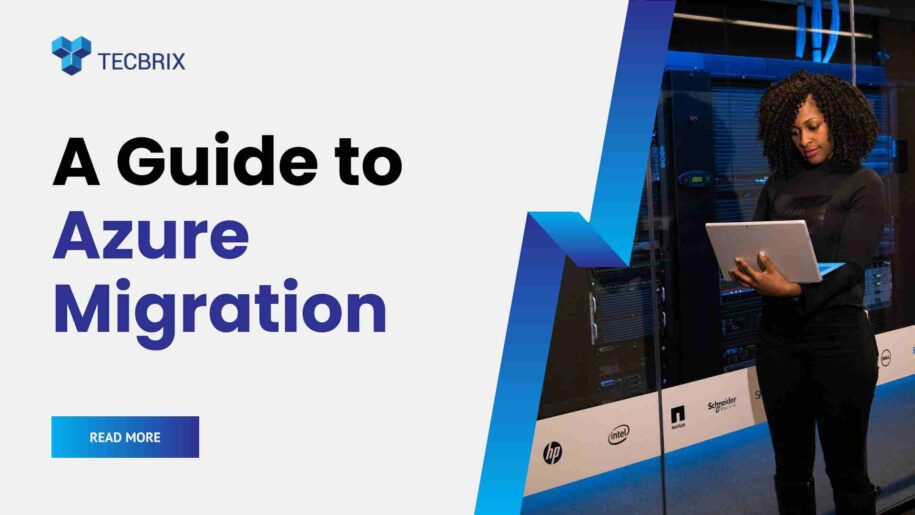In this blog post, we’ll discuss a comprehensive Azure Migration step-by-step guide to direct your Azure migration phase, as recommended by Microsoft.
Azure offers a market-leading cloud platform as a perfect foundation for enterprise-scale IT infrastructures having rigorous compliance and data privacy policies. For efficient and smooth execution of your cloud migration, it is mandatory to gain in-depth insights into four primary migration steps:
Azure Migration Step By Step Guide
Microsoft directs a 4-step azure migration checklist to relocate entire environments or apps to Azure.
Step 1 – Assess
The first step involves discussing and sharing the azure migration project among all key stakeholders, aggregating & comparing the costs of current infrastructure with Azure deployment, and outlining the scope of your application expected to undergo scalability after migration.
The Step is Intended to Assess Applications to Foresee:
- How fruitful will they be after a successful deployment on the Azure cloud framework?
- What are the necessary changes required to make them adapt to the new cloud environment?
Key Aspects to Consider for The 1st Azure Migration Step
- Networking—Considering a Virtual Network to keep performance up to the benchmark. Evaluate the number of subnets you require and how DNS will be administered to manage permissions & curb human error during the transition (using Microsoft’s Active Directory or Azure Cloud DNS as a Service).
- Storage—Choose the right Azure storage options depending on the nature of your data. For instance, there is no need to deploy Cold data in robust storage as it can be stored in slow & budget-friendly storage. On the other hand, you need faster storage for Hot data for its frequent and instant usage.
- Scalability— Azure Autoscale allows applications or services to perform at their best by enabling high scalability when it comes to demand surges. It requires critical budget modeling to leverage this feature and smart utilization of your migration budget.
- It is also recommended to utilize tools offered by Azure itself to evaluate applications before migration and get automated suggestions related to the processor, storage capacity, existing network infrastructure and capabilities, performance needs, reliability, maintenance cycles, etc.
Step 2 – Migrate
You can find the relevant tools and methodologies that assist you in different Azure migration steps. It is recommended to start with the applications that offer high value & functionality to your business and can be migrated easily. Then, move to the more complex or least important applications. You can also decide the starting node of your Azure migration by segmenting your applications according to the Important/Urgent principle.
Key Aspects to Consider for The 2nd Azure Migration Step
- Do you require a hybrid cloud framework of Azure?
- Is there anything capable of performing on an MS Office 365 environment instead of Azure?
- Do you want to deploy your application on mainstream virtual machines or containers?
- Do you want to migrate applications that utilize higher storage or require modern hardware solutions that are not available with any particular Azure VM instances?
Step 3 – Optimize
Once your application is migrated to the cloud and starts working successfully, you need to continuously monitor the application to find potential areas for further improvement and optimization.
Key Aspects to Consider for The 3rd Azure Migration Step
- Critically identify and evaluate your existing cost and find ways to reduce it further to improve your ROI.
- Monitor performance to make sure your migration is up to the expected benchmark (providing at least the same outcomes in terms of efficiency & performance as the on-premise or previous cloud infrastructure or acquiring higher performance summits. (You can compare results for on-premise to Azure migration, migration from AWS to Azure, etc).
Step 4 – Secure And Manage
It is vital to consider the security aspects after migration to the cloud framework. Azure offers dedicated security monitoring and policy control. State-of-the-art security utilities and controls offered by Azure help you in eliminating all the potential vulnerabilities or threats that remained obscure before Azure migration.
Key Aspects to Consider for The 4th Azure Migration Step
- Security—determine and evaluate the new defensive posture of your application in a cloud environment, run different tests to ensure that the security level is up to the benchmark, and respond well in case of anomaly detection or penetration attempts. Learn more about Azure’s rich portfolio of security tools.
- Data protection & privacy—Ensure strict security and scrutiny including data backup, data recovery, encryption, and other important aspects mandatory for the compliance of data privacy and security. It helps you safeguard your valuable data assets and intellectual property from potential threats. Azure offers a range of services and methodologies to secure your valuable data assets.
- Monitoring— keep in mind that cloud services are dynamic where performance is not static nor promised. Strictly observe and assess the performance of computation and storage using utilities like the Azure Traffic Manager and ensure real-time reporting of all the resources.
FAQs
Should I opt for migration from AWS to Azure?
It is recommended that you migrate AWS EC2 modules to Azure by leveraging Azure migration services.
How long does an Azure cloud migration take?
A moderate-scale project takes around 2-4 months. However, it can take 6-18 months to successfully migrate more complex server settings & configure cloud-native apps.
Final Thoughts on Azure Step-by-Step Migration
By following all the aforementioned azure migration step-by-step guides in a sequence while leveraging Azure’s own or 3rd party tools, you can make your transition easier and smoother. Start by assessing the right Azure model for your business or application and keep optimizing the performance & security aspects of your cloud environment after the successful migration.

